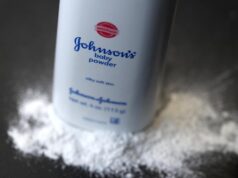Okay, I’ll be honest with ya—finger waves are not the most beginner-friendly, lazy hairstyle to DIY right before a big night out. Like, you’re going to need some patience/practice before you ace the finger-waves technique (I’m sorry! I don’t make the rules!). But rest assured: with the right combo of products and tutorials, you can 100 percent get professional-looking finger waves at home, without the meltdown. And that’s where I come in.
Below, I gathered the very best tips and tricks for doing finger waves on all different hair types and lengths. And since having the right lineup of products is half the battle, I included all those recommendations, too. So the next time you want to wear the wavy hairstyle, remember this article and give it a try yourself first. Why not?!
If you failed terribly at your first attempt of finger waves, I’m gonna guess you didn’t have—or at least weren’t using—the correct products. While you can get away with whatever you have in your vanity for, say, beach waves, finger waves are nearly impossible to achieve without the right products and tools, starting with…
Listen, written-out instructions won’t be the easiest way to learn how to do finger waves—watching a billion tutorials will be. But! In case you’re not a ~visual~ learner, check out these steps below, then watch this beginner finger-waves tutorial from I Am Nakiah.
Although finger waves are a popular hairstyle for pixie cuts and a favorite way to style short hair, they can still 100 percent be done on medium-to-long hair lengths. All you need is a little more gel, duckbill clips, and strong-hold hairspray. Exhibit A: The video tutorial above on long type 4 hair. Since more length will require more product, you can expect to spend more time under the hair dryer, but worth it, right? To reinforce the shape as it sets, leave the clips in and tie a scarf around the top of your head until it’s almost completely dry.
Once you have a good grasp on the basics of finger waves, you can start customizing it for your specific hair length (as we discussed above) by making a few adjustments to the products used, the amount you use, and when to apply them. Here are three more examples of how to make finger waves work on various hair types:
As demonstrated by this YouTuber, start with your hair gel first, then use the palms of your hands to slick down the strands on either side of your part to set the foundation of your look. After you’ve applied your gel, add a liberal amount of mousse all over and comb it through to create the “S” shape.
For a more subtle look, like the one shown here, rake a teeny bit of gel through your hair (you can always add more as you need it), but don’t hold back with the mousse. You’ll need a lot of the foamy stuff to get your hair to take shape. A softer wave like this with less gel makes it easier to blend into straighter strands in the back if you decide to skip the rest. Tip: Wear creaseless clips while you finish getting ready to encourage the shape as it dries.
After prepping their hair with a detangler or leave-in conditioner, this YouTuber follows up with a combo of curl cream and strong-hold styling gel—and a lot of it—to slick their hair down. To recreate, use a bristle brush to help work the product evenly through the strands and mold your hair against your head. After you’ve applied the gel, work a styling mousse through your strands, then create the waves with your comb and your finger. Once you’ve finished setting the style, cover your hair with a wrapping strip to prevent it from lifting while it dries.









